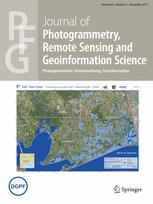A recently published paper presents an approach for classifying urban blocks according to their built-up structure based on high-resolution spaceborne InSAR images. Most attributes considered in the classification describe the geometric structure and spatial disposition of the polygon and line features extracted from each block. The feature extraction is carried out on two intensity images acquired at the satellite’s ascending and descending orbits. The strategy used for extracting polygon features is described in detail. We also present a Markov random field model used to perform context-based classification of built-up structures. The model establishes a probabilistic dependency between the class labels of two neighbouring blocks, taking in this way advantage of the fact that blocks with the same structure are frequently clustered. 1695 urban blocks were classified into five general built-up types. It is shown that the context-based classification accuracy is up to 6% more accurate than the standard classification on which the context-based model is based. We hence provide evidence (1) that urban block-based classifications can potentially be improved if context is considered and (2) that general built-up structures can be distinguished to a good extent using available high-resolution spaceborne radar images.

Novack, T. and Stilla, U. (2018): Context-Based Classification of Urban Blocks According to Their Built-up Structure PFG – Journal of Photogrammetry, Remote Sensing and Geoinformation Science, Vol. 1 (5), pp. 1-12.
http://www.geog.uni-heidelberg.de/gis/publikationen_journals_en.html


